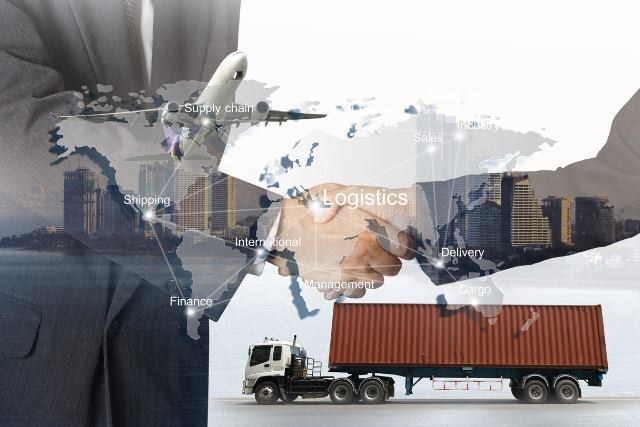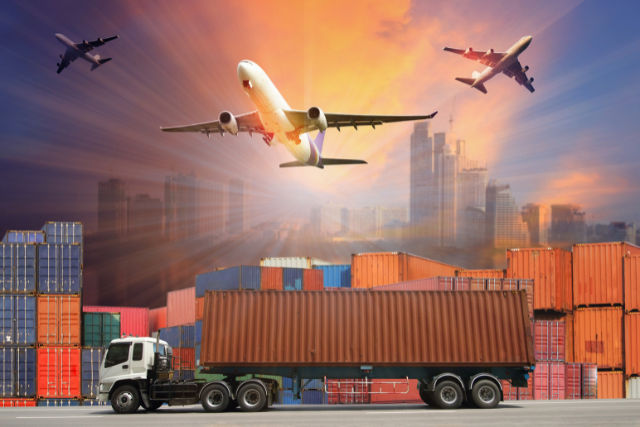Tariffs are more than just a policy tool; they directly influence global trade, impact your daily life, and shape the world economy. From affecting prices at the grocery store to the availability of jobs, tariffs play a crucial role in how economies function and interact.
Historically, events like the Smoot-Hawley Tariff demonstrated how powerful tariffs can be, even worsening the Great Depression. Today, governments are constantly evaluating how to use tariffs to protect domestic industries while still engaging in global trade.
Understanding how tariffs work and their effects can provide you with valuable insights into the broader economic landscape.
Key Takeaways
- Protecting Local Jobs: Tariffs help protect jobs in domestic industries by making foreign products more expensive, giving local businesses a better chance to thrive.
- Trade Wars: When countries impose tariffs on each other, it can lead to trade wars, making international relations tense and complicating global trade.
- Impact on Your Wallet: Tariffs can increase the cost of everyday items, from clothes to electronics, impacting what you pay at the store.
- Environmental Influence: Modern tariffs are being used to encourage environmentally friendly practices by taxing goods that don’t meet specific standards.
- Diplomatic Relationships: Tariffs affect more than just trade; they can influence global politics and long-term relationships between countries.
Historical Evolution of Tariffs
Tariffs have been a powerful tool in global trade for centuries, shaping the relationships between nations and influencing the global economy. One of the most famous examples is the Smoot-Hawley Tariff Act of 1930, which raised U.S. tariffs on thousands of imported goods. While it was meant to protect American jobs during the Great Depression, it ended up worsening the economic situation by triggering a global trade slump.
Over the years, tariffs have often been used during trade disputes as a way to protect domestic industries from foreign competition. By imposing tariffs, countries try to boost local production and reduce reliance on imports. However, this can lead to trade wars, where countries retaliate with their tariffs, causing economic tensions that ripple across the globe.
In today’s world, tariffs are increasingly used to promote sustainability. For example, countries might impose higher taxes on imported goods that don’t meet environmental standards. This strategy not only affects global trade patterns but also encourages companies around the world to adopt greener practices. The history of tariffs shows that their impact goes far beyond economics, touching on environmental and social issues as well.
Tariffs and Domestic Job Markets
Tariffs are a double-edged sword when it comes to jobs. On the one hand, they protect jobs in domestic industries by making imported goods more expensive and less attractive to consumers. This protection can lead to job creation in industries like manufacturing, where companies may increase production to meet local demand.
However, the impact isn’t always positive. In some cases, tariffs can hurt other sectors of the economy. For businesses that rely on imported materials, tariffs can drive up production costs, potentially leading to job cuts or even forcing companies to shut down. Additionally, the jobs created by tariffs might not always match the skills of the available workforce, leading to unemployment or underemployment in certain areas.
For example, a tariff on imported steel might help steelworkers. Still, it could hurt car manufacturers who need steel to build their vehicles, making cars more expensive and possibly reducing jobs in the automotive industry. This shows how the effects of tariffs can be complex and wide-ranging, impacting different parts of the economy in different ways.
Consumer Impact of Trade Duties
You probably notice the impact of tariffs most when you’re out shopping. When tariffs are imposed on imported goods, the prices of those goods often go up. This increase in cost is usually passed on to consumers, meaning you pay more for things like electronics, clothing, and even food.
Here’s how tariffs might affect your shopping experience:
- Higher Prices: Imported items, like smartphones or designer clothes, might cost more due to tariffs.
- Fewer Choices: Some products might become too expensive to import, leading to fewer options on store shelves.
- Budget Strain: With higher prices on everyday items, your monthly budget might feel tighter.
- Quality Shift: As cheaper options disappear, you might end up paying more for higher-quality items, which could change your buying habits.
These changes might seem small at first, but they can add up over time, affecting your overall spending and even your lifestyle. Tariffs can make a real difference in your day-to-day life, influencing everything from what you buy to how much you save each month.
Tariffs, Trade Wars, and Diplomacy
When tariffs escalate into trade wars, the consequences are far-reaching, affecting not just the economy but also international relationships. A trade war happens when countries retaliate against each other by imposing tariffs on each other’s goods, leading to a tit-for-tat situation that can spiral out of control.
Trade wars can strain diplomatic relations between countries. What starts as an economic measure to protect domestic industries can quickly turn into a complex international dispute. This can make it harder for countries to work together on other issues, from security to climate change.
Diplomats often find themselves navigating these tricky waters as trade negotiations become about more than just economic policies. They involve careful balancing acts where every move could have significant long-term consequences for international relationships.
Understanding how tariffs can lead to trade wars and affect diplomacy helps you see the bigger picture of global trade. It’s not just about economics—it’s about the relationships and negotiations that shape the world we live in.
Future Trends in Tariff Policies
Looking ahead, the way governments use tariffs is likely to change, with new trends shaping global trade. Here are some developments you might see:
1. Digital Tools:
Governments will start using technology to manage tariffs more effectively, making the process more transparent and responsive to changes in the global market.
2. Environmental Focus:
Expect tariffs to be used more to promote sustainable practices, such as taxing goods that are harmful to the environment or encouraging the use of eco-friendly products.
3. Revised Trade Agreements:
As global economic conditions and geopolitical landscapes shift, you’ll see trade agreements being updated to reflect new realities, aiming for more balanced trade relations.
4. Agile Tariff Measures:
Tariffs will become more flexible, allowing countries to respond quickly to international developments and protecting their economies from sudden changes in trade or political tensions.
These trends will shape the future of tariffs and global trade, affecting markets, industries, and even your daily life. Staying informed about these changes will help you adapt and make better decisions in an increasingly interconnected world.
Frequently Asked Questions
1. How Do Tariffs Affect Environmental Sustainability?
Tariffs can help promote environmental sustainability by making eco-friendly goods more competitive or by penalizing goods that contribute to environmental harm. This encourages industries to adopt greener practices.
2. How Do Tariffs Protect Intellectual Property?
Tariffs can protect domestic innovations by making foreign products that infringe on intellectual property rights more expensive, thereby discouraging their importation and supporting local industries.
3. How Do Small Economies Respond to Tariffs from Larger Economies?
Smaller economies often use diplomatic channels or align with larger trade blocs to respond to tariffs imposed by larger economies. They may also seek dispute resolution through international organizations like the World Trade Organization (WTO).
4. Can Tariffs Affect Currency Exchange Rates?
Yes, tariffs can influence currency exchange rates by altering trade balances and reducing imports, which can strengthen a country’s currency and impact its value on the global market.
5. How Do Tariffs Impact Access to Medicine?
Tariffs can increase the cost of healthcare and limit access to essential medicines, especially in developing countries, by making imported drugs more expensive.
6. What Are the Long-Term Effects of Tariffs on Global Trade?
In the long run, tariffs can reshape global trade patterns, influence diplomatic relations, and lead to the creation of new trade alliances. They can also affect global supply chains and economic stability.
Conclusion
Tariffs are a powerful tool in global trade, affecting everything from your job prospects to the prices you pay at the store. While they can protect domestic industries, they can also lead to higher costs for consumers and even spark international conflicts.
As the world continues to change, so too will the use of tariffs, with governments finding new ways to balance national interests with global cooperation. Understanding these trends and their impacts will help you navigate the complex world of global trade and its influence on your life.







